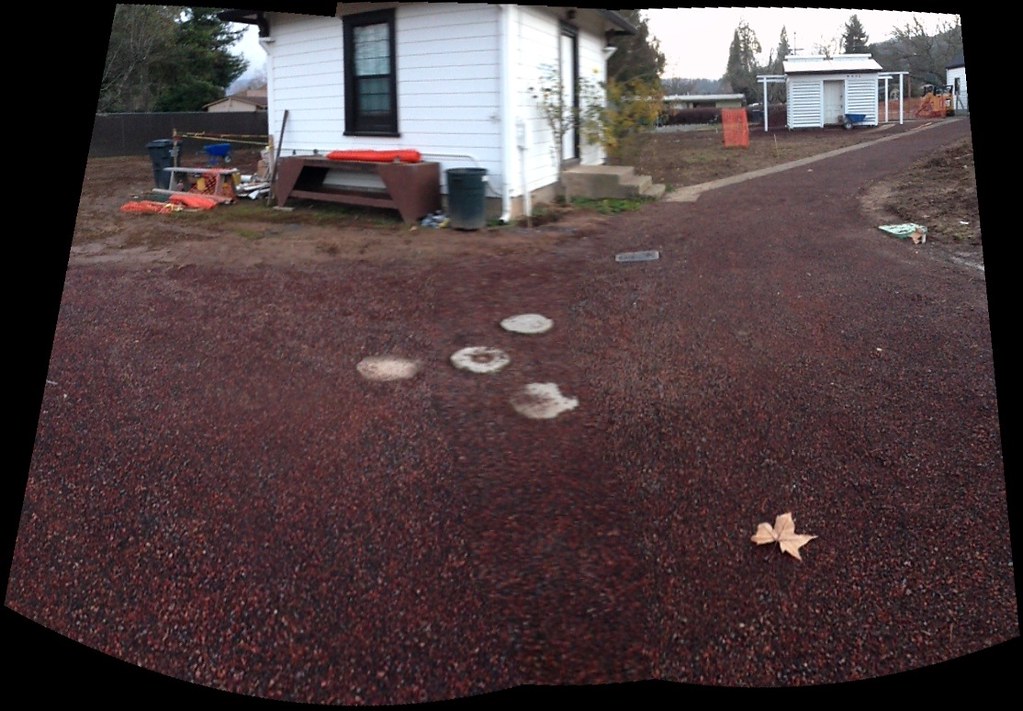I came across an interesting building while researching the Gaithersburg Doughnut Hole a few months ago. It’s just to the east of the hole by a couple of streets, so more accurately it’s just barely on the doughnut, perhaps it’s a coconut sprinkle. Here’s how it appears in a public domain photograph:

It looks rather utilitarian, like a shed for the electric company or some other utility. So then, what justifies its placement on the National Register of Historic Places? Actually the unremarkable appearance hides a much more unusual purpose. This was one of the original locations for a constellation of International Latitude Observatories.
I’m no scientist, certainly no astrophysicist, so I’m likely to mangle the purpose of these observatories. Maybe someone with a background in such things can provide a more cogent description. Very simplistically, the observatories measured “variations in latitude caused by the earth’s wobble on its polar axis.” Astronomers at each location measured common groups of stars at predetermined times and compared variations to determine the wobble. Scientists then factored these calculations into various other measurements to increase their accuracy.
Establishing Observatories
There were four and then six stations initially. Some closed during wars and economic downturns. Some fell by the wayside completely. Amazingly, the program that began in 1899 continued in various forms until 1987. Then satellites and computers replaced manual observations. That’s quite a remarkable streak as I think about it.
I’ve created a map of several stations that operated during various eras.
If you noticed that they all seem to fall along the same line of latitude then you would be absolutely correct. They all fall on or very near 39°08′ North. A common latitude simplified the calculations. An astronomer in charge of the Mizusawa station in Japan directed the star study regimen. Did someone select the latitude because it ran through Mizusawa?
On the other hand the Gaithersburg location sat right next to the facility that evolved into the current National Institute of Standards of Technology. Was that the impetus for the latitude? I don’t know. I found a publication online that seemed to be a history of the program but it was behind a paywall. Unfortunately for the readers of Twelve Mile Circle, I am cheaper than I am curious. The answer might exist but not if I have to pay for it.
Gaithersburg, Maryland, USA
The City of Gaithersburg explains,
“The Gaithersburg Observatory was constructed with a double wall of Georgia and Virginia pine to provide optimal temperatures for the heat-sensitive telescope. The roof was designed in two parts which move east and west on iron wheels operated manually by a rope pulley system within the building. The six-foot, six-inch full opening was always used at Gaithersburg to accommodate the large Zenith telescope. The small size of the building and the esoteric character of the work that took place within speak modestly of the international importance of this landmark. The research provided all data used in polar motion studies for decades, and fostered international cooperation which transcended the differences between man during times of war and international strain.”
More information is also provided by the National Park Service.
Cincinnati, Ohio, USA

The Cincinnati facility remained in operation only until the First World War. There are still observatories in Cincinnati however (map). They just didn’t participate in the program for long.
Ukiah, California, USA

Ukiah was part of the original constellation, and like Gathersburg there’s quite a lot of information about it available on various Internet sites. It still stands today (map). It’s the little shed immediately to the right of the house which served as the original astronomer’s home. Today it’s the centerpiece for a city park. Ukiah decided to restore the old observatory in 2001 with the assistance of a volunteer organization known as the Friends of Observatory Park. Renovations should be complete or nearly complete by now according to resources I found online.
Mizusawa, Japan; Charjui, Turkmenistan; and Kitab, Uzbekistan
I uncovered much less information on these three locations. Mizusawa served other astronomical purposes so it continued to function after the dissolution of the program as part of the National Astronomical Observatory of Japan. The program was important enough in Japan to warrant a 1949 postage stamp. Charjui apparently ceased operations during the Russian Revolution and is now located in Turkmenistan. Kitab was established nearby during the Soviet era and is now part of Uzbekistan.
Carloforte, Italy
Carloforte would have been my location of choice if I had been around during its heyday. It’s a small island located off the southwestern coast of Sardinia. There’s actually Street View coverage here, which surprised me, but trees obscure the actual site. Nonetheless you can open the page and and zoom in on the sign for the observatory on the post in the foreground.

Leave a Reply